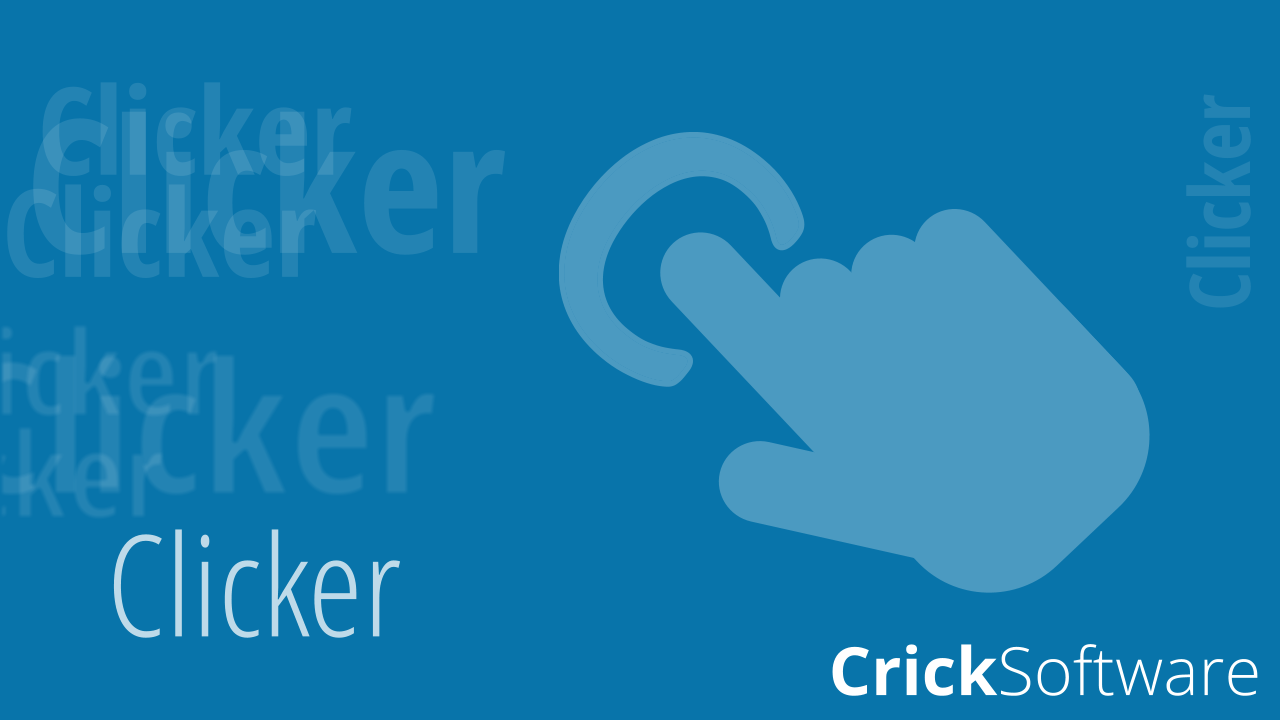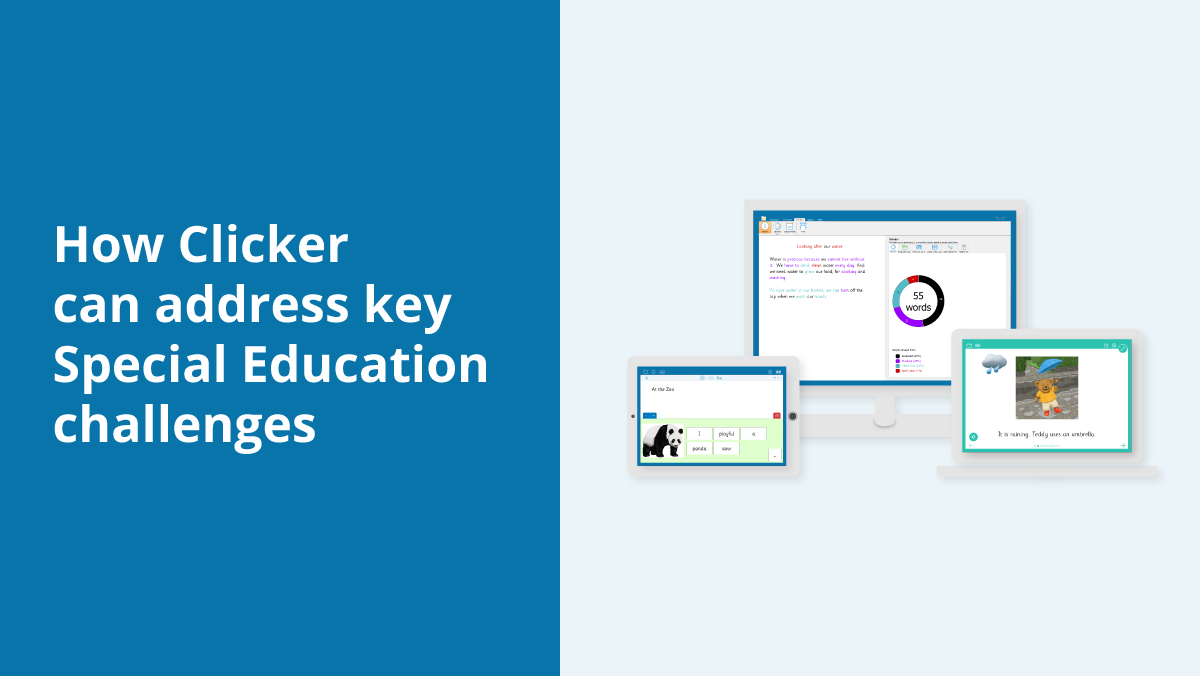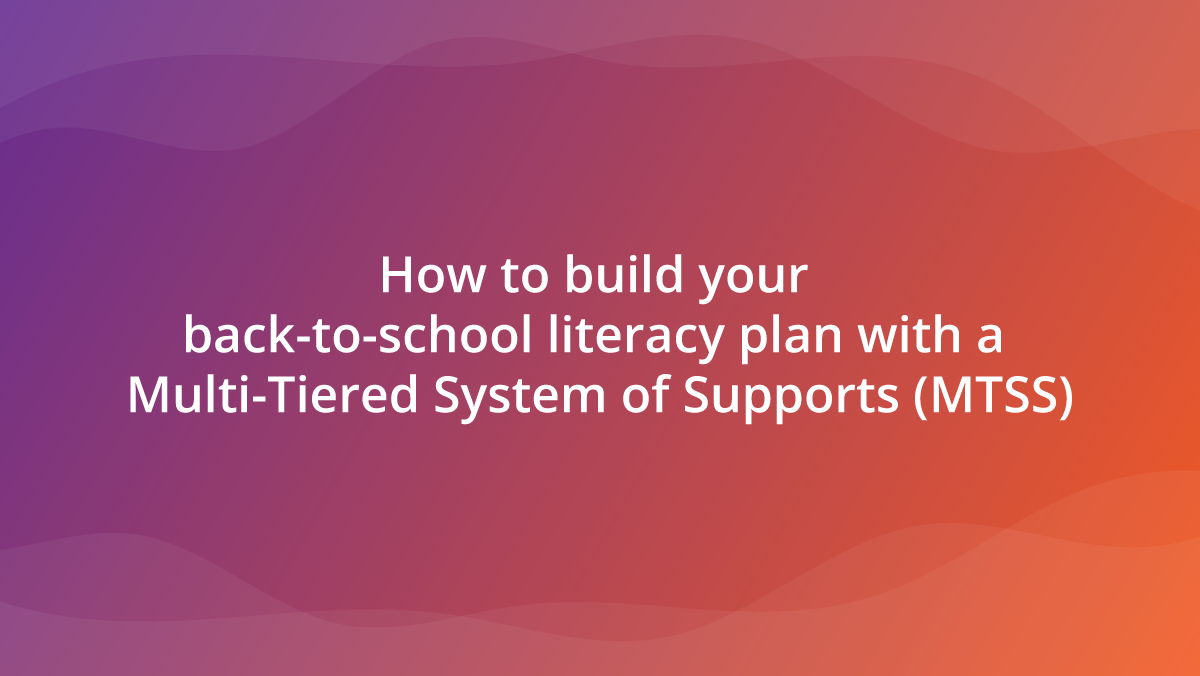Despite strides made in the aftermath of the COVID-19 pandemic, learning gaps remain. Test scores are still down, absenteeism is on the rise, and a looming teacher shortage lurks in the shadows. Because of these concerns, school districts are turning to federal funding to bolster initiatives for better student outcomes.
Many educational leaders allocate federal funds to support literacy goals. Literacy is one of the most important indicators of a child’s success. It shapes their academic journey and impacts their ability to
- communicate effectively,
- participate as citizens, and
- succeed professionally.
Using federal funds on literacy support tools can significantly enhance academic outcomes for students, especially those requiring additional support. Research shows that increased education spending leads to improved student performance. When per-pupil spending is higher, outcomes improve. The biggest improvements happen when states and districts prioritize equity.
To boost recovery efforts, the Department of Education encourages school leaders to consider the ways that technology can advance equity. Federal funding should be used to implement strategies that make a meaningful impact on developing the “whole learner.”
But figuring out how to use the government's money can be tricky. Educational leaders must understand how to navigate the federal funding landscape.
A federal funding overview for K-12 school administrators
ESSA
The Every Student Succeeds Act (ESSA) is the federal K-12 education law of the United States. It extended more flexibility to states in controlling their education systems, while ensuring transparency for parents and communities.
Under ESSA, every state must measure student performance in key subjects like math, reading, and science. They must provide easily understandable “State Report Cards” to inform parents and communities about school performance. Importantly, ESSA mandates reporting on per-pupil expenditures, which is tied directly to student performance.
The purpose of ESSA is “to provide all children significant opportunity to receive a fair, equitable, and high-quality education and to close achievement gaps.” To achieve this, ESSA allocates funds to school districts through formula grants and subgrants organized under nine titles:
- Title I: Improving Basic Programs Operated by State and Local Education Agencies
- Title II: Preparing, Training, and Recruiting High-Quality Teachers, Principals, or Other School Leaders
- Title III: Language Instruction for English Learners and Immigrant Students
- Title IV: 21st Century Schools
- Title V: State Innovation and Local Flexibility
- Title VI: Indian, Native Hawaiian, and Alaska Native Education
- Title VII: Impact Aid
- Title VIII: General Provisions
- Title IX: Education for the Homeless and Other Laws
IDEA
The Individuals with Disabilities Education Act (IDEA) is second only to ESSA in its scope and impact. Its primary aim is to ensure that students with special needs and disabilities receive the support and resources necessary to achieve academic success.
IDEA offers a range of funding opportunities to support various aspects of special education, including early intervention programs and the integration of technology into classrooms tailored for students with disabilities. Through formula grants, IDEA provides states with essential funding to develop and maintain special education services within their jurisdictions. These grants are allocated based on specific formulas that include factors such as the state's population and the number of students with disabilities.
In addition to formula grants, IDEA also authorizes discretionary grants, which allow states and local education agencies to apply for funding to support innovative programs and initiatives aimed at improving outcomes for students with disabilities.
IDEA plays a crucial role in promoting equity and inclusion in education by ensuring that students with disabilities have access to the specialized support and resources they need to thrive.
ESSER
The Elementary and Secondary School Emergency Relief (ESSER) funds have been a critical resource in addressing the challenges posed by the pandemic in our education system. This federal funding is specifically designed to support schools in their efforts to recover from the disruptions caused by the pandemic and implement necessary academic interventions.
One of the key features of ESSER funds is their flexibility. Unlike other funding streams, which come with more restrictions, ESSER funds offer school districts significant leeway in deciding how to allocate the resources based on their local needs. This flexibility allows districts to tailor their spending to best address the unique challenges faced by their students and communities.
To access ESSER funds, school districts apply to their State Education Agency (SEA) for subgrants. These funds are intended to support a wide range of initiatives aimed at mitigating the impact of lost instructional time and promoting student learning recovery.
It's important to note that while the current round of ESSER funding expires in September 2024, districts still have the opportunity to invest in multi-year licenses for high-quality instructional materials. This strategic approach ensures that districts can continue to implement effective interventions beyond the funding period, maximizing the long-term impact on student achievement.
How to leverage federal funding for improved literacy outcomes
Our student populations are diversifying at a rapid rate.
- English language learners make up about 10% of the overall student population and continue to grow.
- Special education students comprise between 13% to 15% of the overall student population.
Schools must ensure that all learners have equitable access to quality education. Fortunately, federal funds can provide essential resources to support the unique needs of diverse student populations.
| Fund type | Purpose | Funding can be used for... | Example |
| Title I ESSA |
Close achievement gaps by providing personnel, instruction, and interventions to support struggling learners | Costs related to curriculum, materials, and supplies | Conduct universal screenings to identify students’ abilities to provide targeted instruction and intervention |
| Title II ESSA |
Prepare and train educators to enhance literacy instruction, particularly in high-need schools and early childhood education programs | Costs related to professional development for teachers and paraprofessionals | Provide training on how to integrate literacy instruction into other subject areas like math and science |
| Title III ESSA |
Ensure that English language learners attain English proficiency and develop high levels of academic achievement, and assist teachers in developing and enhancing their capacity to provide effective instructional programs |
Costs related to supporting Multilingual Learners |
Incorporate ed-tech into curricula and programs to support literacy instruction for ELs |
| Title IV ESSA |
Support the comprehensive needs of students in a variety of settings, including improving the use of technology to improve the academic achievement and digital literacy of all students |
Costs related to academic, social, and health services for students, families, and community members that will result in improved educational outcomes |
Invest in technology to help improve literacy outcomes |
| IDEA | Provide funding for special education programs |
Costs related to students with disabilities |
Purchase hardware or software for students with Individualized Education Programs |
| ESSER | Alleviate learning gaps caused by the disruption of the pandemic |
Very few restrictions on how funds can be spent |
Procure comprehensive literacy programs to boost reading, writing, listening, and speaking skills |
From assessment to action: How to use effective federal fund strategies
The use of federal funds should always be aligned with student needs and desired learning outcomes.
Throughout the process, districts should:
- Identify the most pressing concerns through a comprehensive needs assessment and determine suitable solutions.
- Consider diverse perspectives by involving stakeholders, like staff, administration, parents, and community partners.
- Ensure that interventions are effective and sustainable by aligning with policy and best practices.
- Use data to inform decision-making, enabling educators to target interventions where they are most needed and track their impact over time.
- Balance and diversify expenditures, addressing students' diverse needs and confirming that resources are allocated equitably.
School districts can develop the best investment plans by using collaborative, data-driven processes. This can create a continuous improvement cycle focusing on student and educational outcomes.
Clicker and DocsPlus: Two literacy tools to spark growth in your students
With growing numbers of students in special education and English learner programs, it's imperative to invest in solutions that support their academic success. One significant challenge faced by these students is in developing proficient writing skills. Many struggle with various aspects of the writing process, including
- organizing their thoughts,
- expressing ideas cohesively, and
- vocabulary, spelling, and grammar.
Software solutions like Clicker and DocsPlus offer invaluable scaffolded support to address these challenges in K-12 classrooms. By providing differentiated solutions that cater to the diverse needs of learners, these tools empower educators to create inclusive learning environments where every student can find success.
Clicker
Clicker is a complete literacy toolkit for elementary classrooms. Clicker's multisensory approach of using words, pictures, and sounds keeps learners interested and motivated and gives them the tools they need to achieve success.
Clicker enables you to present students with activities that are broken down into small steps, and to revisit learning objectives in a variety of ways. It provides every student with the right amount of support and challenge.
Teachers can incorporate Clicker Boards, Books, and Sets, from the LearningGrids resource library or create their own. With thousands of premade Clicker resources and the ability to create your own, the software’s simplicity and flexibility make it highly effective across the elementary age range and curriculum.
DocsPlus
For middle and high school students, DocsPlus provides the support they need to tackle writing tasks for higher-level curriculums.
DocsPlus is a supportive word processor that includes tools like text-to-speech, voice notes, and predictive text. These tools help struggling students gain reading and writing fluency. Wordbars can provide key vocabulary and WorkSpaces allow students to organize their thoughts using mind-mapping tools.
In addition to student support tools, there are also analytics that provide educators with helpful insights. These include how many words have been entered by the keyboard, the predictor tool, the spell check tool, or pasted from another source. Teachers can review those analytics and then provide targeted feedback for student growth.
Using your federal funds? Why integrated solutions matter
Today's digital classrooms call for integrated solutions. Fragmented learning experiences across multiple platforms burden both students and educators.
Switching between tools
- increases cognitive load,
- disrupts instruction, and
- hampers efficiency.
For teachers, tracking student progress becomes challenging with data scattered across platforms.
Crick software products offer comprehensive support within a single platform. Tools like Clicker and DocsPlus streamline learning experiences, which reduces cognitive load and increases efficiency.
With everything in one place, students can access various supports seamlessly. This integration makes it easier for educators to deliver targeted instruction, track analytics, and improve student outcomes.
Crick Software success stories and evidence of impact in K-12 schools
Clicker
Everett School District was seeking an EdTech solution for students who struggled with writing and language processing. They were looking for a solution that was easily customizable and would provide students with the support they needed to express themselves in writing.
The district invested in Clicker for their Life Skills classrooms at all grade levels. Clicker has been a transformative tool for many students at Everett School District. Its assistive features facilitate extended writing and help to develop literacy skills for students at all levels.
Barb Lark, an Assistive Technology Specialist, shared, “It’s a literacy tool that allows for immediate expression of ideas. It allows children to go from stock answers to broader self-expression. For students with learning challenges, it allowed access that they otherwise wouldn’t have had.”
DocsPlus
Karen Allum, Head of Learning Development at Culford School, had used Clicker to support younger learners and was in search of a tool for older students.
“My favorite feature of DocsPlus is WorkSpace, the mind mapping area. It really helps students to plot out and organize their ideas for an essay: we can color-code each part so that they can very quickly see how to structure each paragraph, and it encourages them to actually develop each of those ideas too,” she stated.
Allum shared other positive outcomes from embedding DocsPlus, including:
- increased writing output,
- sophisticated and relevant vocabulary, and
- detailed, higher-level work.
DocsPlus has had a significant impact on students’ confidence and self-belief. A seventh-grade student responded, “I’m really bad at spelling and the predictive text is amazing and it speeds up my writing. Before I would have tons of spelling mistakes in my work but now I feel confident to hand in my work.”
Invest in integrated literacy solutions to help your students succeed
Leveraging federal funds for literacy support and growth is critical in ensuring every student's success. By strategically investing in high-quality educational technology tools like Clicker and DocsPlus, schools can
- enhance literacy outcomes,
- boost classroom engagement, and
- increase student confidence.
The Center on Budget and Policy Priorities found some school districts have not tapped all available funds and risk losing any unused funds in September. Don't miss out on these valuable resources!
Make the most of your federal funding opportunities for literacy support. Access our guide to explore the possibilities now.





